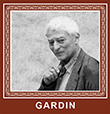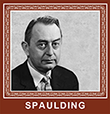1950s
The origins of archaeological computing as a discipline are generally linked to the development and dissemination of methods for the mechanical analysis of data and the growing recognition of quantitative research as a new heuristic approach to archaeological typology and artefact classification. During the 1950s, when even the academic circles nourished scepticism about the possible use of machines in the Humanities, archaeology acknowledged few isolated experiments carried out by some enlightened forerunners.
To better illustrate this scenario, we selected two main actors, who sought to experience the capabilities of machines for both automatic classification and the application of mathematical and statistical techniques, giving impetus to new methods for processing archaeological data even before the advent of computers: Jean-Claude Gardin and Albert Spaulding. They well represent the two main research trends that soon became apparent both in Europe and in the USA: documentary analysis, with the theoretical issues raised by the automatic processing of scientific information, and quantitative analysis, with the methodological issues raised by the use of mathematical models for data classification.
Since the mid-1950s, Jean-Claude Gardin focused on knowledge formalisation and representation, giving rise to the first experiments in the coding of archaeological artefacts in order to formulate precise and objective descriptions suited to «the combinational games» of information retrieval or automatic classification. His impressive bibliography covers more than sixty years of scientific commitment and accounts for the evolutionary process of his logicist programme as a means of accomplishing a firmer basis for archaeological scholarship.
Albert C. Spaulding is considered one of the pioneers in the application of quantitative methods and in the introduction of statistical thinking in archaeology. He is also one of the protagonists of the early debate on the need to define artefact “types” and to formalise the process of artefact classification, by promoting an alternative way of formulating typological concepts through the application of statistical methods. This is the reason why many scholars claim that he laid the groundwork for the New Archaeology movement that spread in the 1960s.

